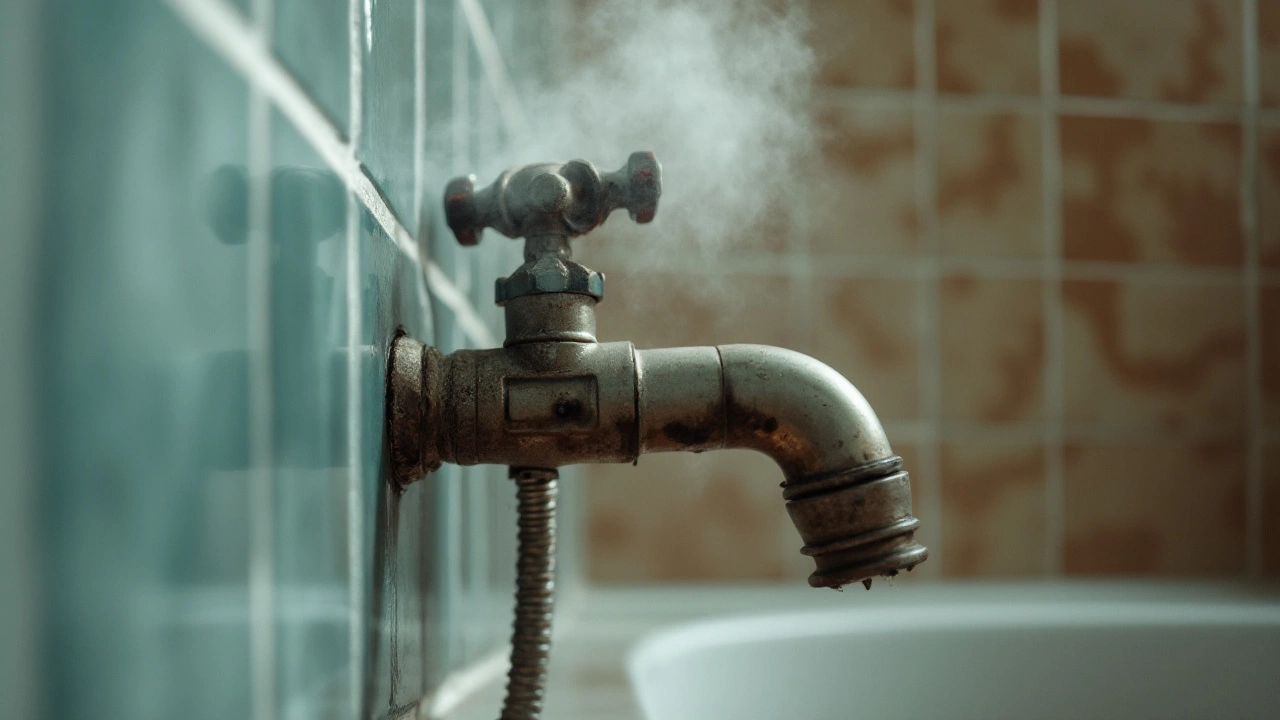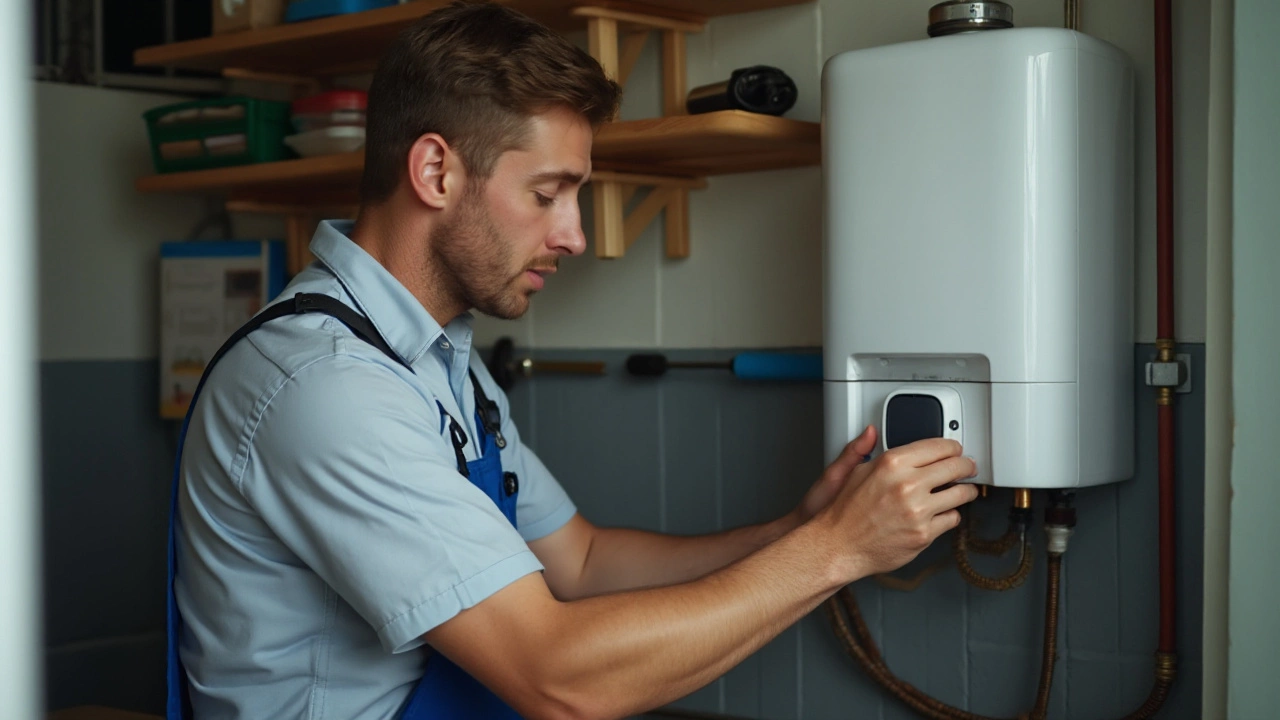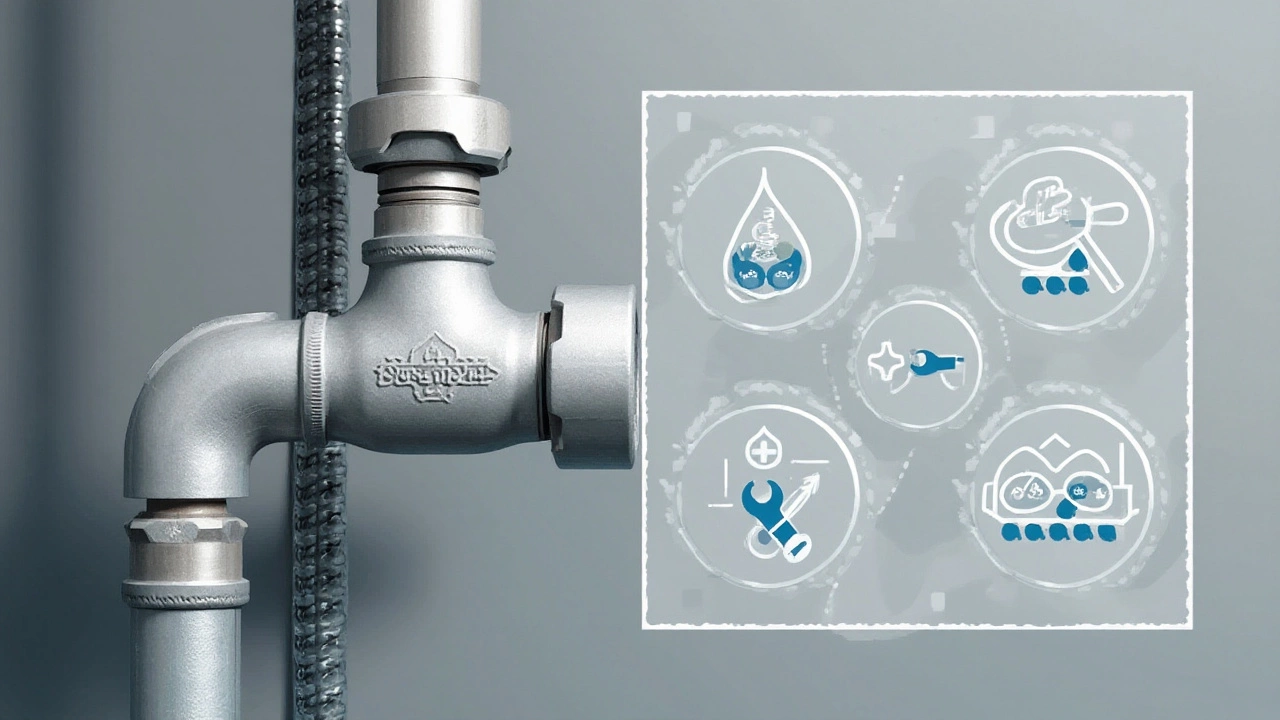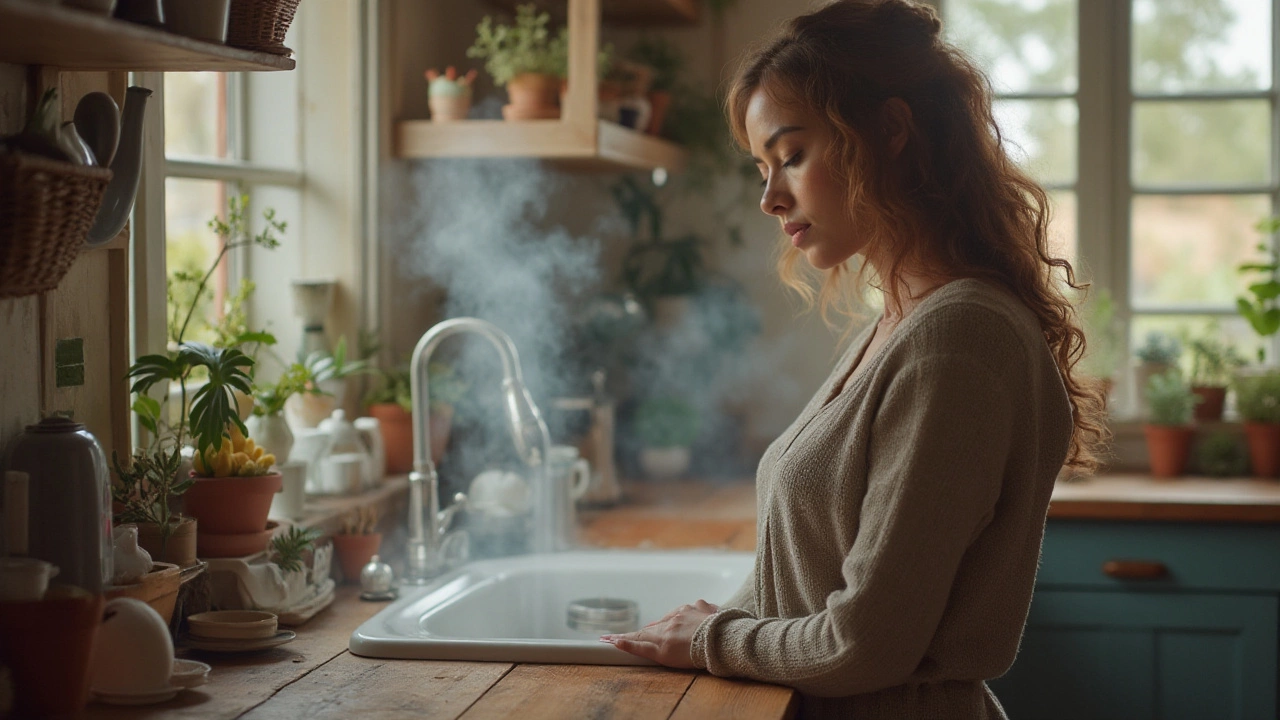Picture this: a chilly morning as you step into the shower, craving the warm embrace of hot water streaming down. Yet, to your dismay, it's a cold drizzle greeting you instead. Thoroughly confused, you check the sink right next door, only to find it's heating up as expected. So, what's going on?
This hot-cold conundrum isn't just a fluke. Various factors can contribute to this common household dilemma. It might be the diverter valves, often scuttling their duties, or possibly the fault lies in your water heater's settings or efficiency. Before tossing in the towel and resorting to cold showers or costly repairs, let’s delve deep into understanding and troubleshooting these issues.
This article will walk you through the nuances of identifying whether it’s a plumbing issue or perhaps a simple mechanical glitch. Armed with the right insights, you'll be better prepared to restore your home's comforting hot showers and save on potential repair costs. Dive into these solutions to ensure your mornings start on a warm, welcoming note.
- Identifying the Problem
- Diverter Valves and Mixing Issues
- Water Heater Troubleshooting
- Preventative Tips for Homeowners
Identifying the Problem
When faced with a shower delivering nothing but cold water, while the sink next door dispenses consistently heated water, it can be quite baffling. The first step towards a solution is understanding the root of the problem. The issue at hand usually resides in the plumbing configuration, the water heater's performance, or the components directly involved in regulating water flow and temperature. A deep dive into the system, starting from the basics and proceeding to specifics, will often reveal the areas needing attention.
One of the known culprits is an internal plumbing imbalance. Your home's plumbing system is akin to a finely tuned orchestra, and even the slightest disrupt can throw the entire system off-key. Here, both hot and cold water need to mix seamlessly, especially within the shower. If valves or mixers are faulty or misaligned, they may allow only cold water to reach the showerhead, while the sink happily serves hot water.
Another perspective might be a failing or underperforming water heater. If your device isn't calibrated correctly, or if it's not receiving sufficient power (in cases of electric models), it might not heat water quickly enough to meet the demands of your shower. Sometimes sediment build-up within the heater itself can reduce its efficiency, resulting in inconsistent water temperature distribution. A regular inspection of the water heater for such buildups and malfunctions can be quite revelatory.
"A thorough inspection of your home plumbing system, with a focus on flow distribution components, is crucial in diagnosing shower water temperature issues; many issues can be resolved through simple adjustments." — Plumbing & Water Efficiency Solutions
The possibility of faulty diverter valves mustn't be dismissed either. These components are responsible for channeling water to either the tub spout or the showerhead. If debris or corrosion affects them, the flow to the showerhead can become obstructed, thus affecting hot water delivery. Testing the diverter and ensuring it's swiveling or pivoting correctly might solve such issues.
Finally, it’s worth contemplating external factors such as extreme cold weather. In regions that experience drastic temperature drops, even well-insulated pipes can succumb to a freeze at times. Should the pipes feeding the shower be partially frozen, this too could limit the hot water flow. Consulting with a professional to enhance pipe insulation or checking for drafts along pipe routes might preempt future temperature-based interruptions.
These are but a few areas where issues can arise, leaving you shivering in a cold morning shower. The key to solving these mysteries lies in understanding the unique configurations and conditions of your home's water distribution system. Armed with this knowledge, troubleshooting becomes more intuitive and less daunting.

Diverter Valves and Mixing Issues
The intricacies of plumbing might seem as perplexing as a detective novel, especially when it comes to diverter valves and the subtle art of water mixing. These components are critical players in ensuring the right temperature hits your shower floor, and when things go awry, they can turn a warm dream into a cold reality. A diverter valve is mainly responsible for channeling water between your tub spout and the showerhead. When its functionality is compromised, you’re bound to feel the impact in the shower experience, often marked by inadequate hot water flow. The valve can wear out or get clogged over time, causing an imbalance in the hot water reaching your shower.
Sometimes, it's the mixing valves taking a bow in this performance of water distribution. These mechanisms blend hot and cold water to your preferred temperature. Any malfunction in the valve can skew the water temperature, delivering a tepid shower despite your intentions. An interesting fact to consider is that these issues may arise without any apparent warning signs. If your shower's performance changes suddenly, it often points to these components needing attention. Plumbing experts suggest that homeowners might occasionally need to manually adjust or consider replacing valves that show signs of wear. A well-maintained valve can significantly prolong the water system's efficiency, protecting against imbalances and tackling the root causes of this chilly predicament.
The Solution: Inspection and Maintenance
To address these challenges, step one is a thorough inspection. Check the valve for any signs of leakage, wear, or obstructions. If the valve seems stuck, it might just need a good cleaning. However, in cases of extensive wear, replacement becomes necessary. Thankfully, replacing a diverter valve isn't as daunting as it seems. Turn the water supply off to avoid any surprise showers and safely disassemble the valve setup. If you're handy with tools, replacing this part might be right up your alley, but consulting a professional plumber can ensure it's done without a hitch. Additionally, periodic maintenance checks can ward off future instances of water balance issues, sparing you from those unforeseen freezing encounters."Regular inspections and timely maintenance are the linchpins for ensuring a steady blend of hot and cold water," notes Neil Dunn, a renowned plumbing engineer, outlining the vital role of routine valve checks.

Water Heater Troubleshooting
When your shower seems incapable of delivering hot water, yet the sink stands in defiant contrast, it’s time to scrutinize your water-heating system closely. A common suspect in this scenario could be the water heater itself. First off, check the unit's thermostat settings. It’s remarkable how a seemingly insignificant nudge of the dial can diverge the heat distribution in your home. Sometimes, a faulty thermostat can be the culprit, leading to this perplexing hot-and-cold situation. Make sure it's set to an adequate temperature, typically between 49-60°C, to maintain a reliable hot water supply.
Another potential issue could be sediment buildup within the tank. Over time, minerals and debris can settle and insulate the heating elements, preventing them from effectively warming the water. Flushing out your water heater regularly can make a notable difference. For those unfamiliar, this process involves turning off the power supply, attaching a hose to the drain valve, and flushing out the contents until the water runs clear. It’s a straightforward task that can significantly enhance your heater’s efficiency, ensuring consistent hot water to both the shower and the sink.
Checking for any malfunctioning components is crucial too. Heating elements can wear out or corrosion can cause leaks, limiting the heater’s effectiveness. Using a multimeter, you can test the elements to confirm if they’re faulty. If they are, it's time to replace them. It's a task that can often be accomplished without professional help, although safety precautions are essential. Always cut the power supply to avoid any electrical mishaps.
"Understanding your water heater is crucial for maintaining an efficient home. Regular checks and maintenance can prevent many common issues," advises Bob Vila, renowned home improvement expert.
If you delve into energy management systems, you might find water heaters that promise peak efficiency. Modern units come equipped with advanced technology, offering more control and potentially solving sporadic temperature issues. Investing in an upgraded system might seem daunting initially, but it can provide long-term benefits in both cost and consistency.
When things go awry beyond your expertise, remember that consulting a licensed plumber isn't a sign of surrender but a strategic move toward a lasting solution. An expert can perform a comprehensive inspection, pinpointing issues from subtle leaks to intricate circuit board problems. Returning to comfortable hot showers could be just a professional call away, without enduring icy jolts every morning.

Preventative Tips for Homeowners
Ensuring that your home's water system remains in tip-top shape is an ongoing commitment. One of the best ways to avoid sudden and unexpected interruptions in your hot water supply is through regular maintenance of your water heater and plumbing system. Start with scheduling routine inspections. As a rule of thumb, inspect your water heater at least once a year. Sediment buildup, often a culprit in efficiency drops, can be mitigated or removed by flushing the system—a process any handy homeowner can undertake with some basic guidance. Address any mineral buildup around plumbing fixtures promptly to prevent damage that can exacerbate hot water issues.
Maintaining a balance in water heater settings is equally crucial. While it might be tempting to set your heater to the highest temperature for hotter showers, doing so can accelerate wear and tear as well as increase energy bills. Manufacturers typically recommend a setting around 50°C (122°F) which is hot enough to provide comfort but cool enough to prevent scalding and appliance overuse. Additionally, using pipe insulation both in the water heater and plumbing lines helps minimize heat loss, ensuring efficient water delivery to showers without taxing the system unnecessarily. This small investment can lead to considerable savings in both energy and future repair costs.
Avoid common plumbing issues by routinely checking valves and fittings for leaks or malfunction. Homes with diverter valves, which direct water from the tub spout to the showerhead, should ensure these components are operating smoothly to avoid discrepancies in water temperature or flow. If you encounter recurring difficulties, such as persistent cold showers while the sink remains hot, consider consulting a plumbing professional. According to a statement by the American Society of Plumbing Engineers, "Routine inspection and maintenance of plumbing systems reduce the risk of unexpected disruptions and extend the lifecycle of infrastructure—a prudent choice for homeowners."
Moreover, staying informed about new technologies or improvements in residential heating systems can also equip you with choices that may offer fewer problems down the line. Modern water heaters, such as tankless models, tend to offer quicker heating times and more consistent temperatures—qualities that can significantly impact user experience positively. By adopting a proactive mindset, you secure both comfort and peace of mind, preserving the functional integrity of your home's water systems. Remember, preventing issues is far more cost-effective than addressing crises after they occur—it’s not just smart; it’s essential homeownership in practice.

I am an expert in the services industry with a focus on appliance repair. My passion lies in understanding how things work and educating others in simple, engaging ways. This enthusiasm fuels my writing, where I delve into topics around appliance maintenance and troubleshooting. I aim to make these subjects clear and accessible to all readers.